Research Article - (2021) Volume 9, Issue 12
A Study to Assess the Level of Knowledge on Women Regarding Awareness of Breast Self-Examination, Which Reduce the Risk for Breast Cancer Complication
Mrs. Jeyasree and AR. Bharathi*
*Correspondence: AR. Bharathi, Department of Nursing, Bharath Institute of Higher Education and Research, Selaiyur, Chennai, Tamil Nadu, India, Email:
Abstract
International Agency for Research on Cancer (IARC) in December 2020 states that Breast cancer is the number one common cancer around the world and it has surpassed lung cancer occurrence. WHO and IARC in 2020 have decided to join hands in eradicating or minimising deaths caused due to breast cancer by creating an awareness of breast health, early diagnosis and providing quality care to everyone in need. The occurrence of cancer has not gone down but doubled in the last 20 years. It was estimated to be 10 million in 2000 but has raised to an alarming 19.3 million in 2020. Currently it is projected that 20% of the world population will develop cancer. It is an utmost significant fact that Breast among other cancers can be cured if detected well in advance. When it comes to women, breast cancer is the commonly detected cancer and also the foremost cause of cancer death. Apart from regular mammogram tests it is necessary to instil the importance of breast selfexamination in women. Hence the present study was designed to analyse the awareness among women about breast selfexamination and breast cancer. Among 100 women, 77% of them had zero or minimal knowledge about breast selfexamination. This type of study helps public health interventions and reiterates the importance of awareness programs.Keywords
Breast Self-Examination, Breast Cancer Complication, Lesser axillary node metastases, Knowledge, lumps, distortion (or) swellingIntroduction
The International Agency for Research on Cancer (IARC) in December 2020 states that Breast cancer is the number one common cancer around the world and it has surpassed lung cancer occurrence. WHO and IARC in 2020 have decided to join hands in eradicating or minimising deaths caused due to breast cancer by creating an awareness of breast health, early diagnosis and providing quality care to everyone in need [1]. The occurrence of cancer has not gone down but doubled in the last 20 years. It was estimated to be 10 million in 2000 but has raised to an alarming 19.3 million in 2020. Currently it is projected that 20% of the world population will develop cancer. In 2020, 1,392,179 are said to develop cancer in India alone; the most common cancers being breast, lung, mouth, cervix uteri, and tongue. It is also reported that 57% of breast cancers were detected only in their advanced stages [2]. It is an utmost significant fact that Breast cancer among other cancers can be cured if detected well in advance.
When it comes to women, breast cancer is the commonly detected cancer and also the foremost cause of cancer death. Apart from regular mammogram tests it is necessary to instil the importance of breast selfexamination in women. If self-examinations of breast are regularly done it helps in early detection of cancer, early symptom identification, earlier clinical stage, smaller tumor size and lesser axillary node metastases [Roger]. Breast self-examination is the screening method used in an attempt to detect early breast cancer, the method involves the women herself looking at and feeling each breast for possible lumps, distortion (or) swelling.
Breast self-examination can be done by checking for breast size, shape, swelling, redness and discharge. Good breast self-exams should be concerned with both the look and feel of breast. The look element should be performed while either standing or sitting in front a mirror with your clothes removed examine both breast and look for visible lumps, any unusual difference between the two breast, changes to your nipples for example nipple that is newly inverted (or) pulling. This is followed by putting hands on the hips, pulling elbows forward and swiveling from side to side. This might bright out lumps the might not appear otherwise. The feel part of the breast self-exam should be done while lying down, with a pillow propping up the head
and the arm resting behind it, with the opposite hand the first three finger index, middle and ring finger are used to press down around the breast and surrounding are using circular motions. Any unusual lumps around the breast area are also examined. It is recommended that the selfexamination is done every month especially 7-10 days after the menstrual cycle. The present study was designed to analyse the awareness among women about breast self-examination and breast cancer. This type of study helps public health interventions and reiterates the importance of awareness programs.
Methodology
The chapter highlights the methodology for the study and includes the description of research design, population the sample size and the sampling technique criteria for data and method of data. To accomplish the objectives of the study the quantities approach was adapted. The present study was concerned with the collection and assessing regarding knowledge about awareness of breast self-examination.
Research design
Research approach: It refers to descriptive design adapted in the study to assess the knowledge of women who are admitted in the Government Hospital, Chennai to get awareness of breast self-examination. The demographic variable include, education, occupation, religion, area. Assessment of knowledge and attitude.
Variable under study
Independent Variable:
• Education
• Occupation
• Cultural practices
Demographic Variable:
• Religion
• Area
Setting of the study: The study was conducted at A Government Hospital, Chennai
Population:
The study population composed of individual women only patient and attendees at a Government Hospital, Chennai.
Sample size:
• The sample size consists of 100.
• Convenient sampling.
Inclusion criteria: Above the age group of 34 years only women came to the Government Hospital, Chennai.
Exclusion criteria: Women under the age of 34 years.
Development of Data Collection
Tool: questionnaires based on breast self-examination and breast cancer were used as the investigation tool.
Data collection procedure: The women above the age group of 34 years who met the inclusion criteria were selected and examined with questionnaires regarding breast cancer and breast self-examination.
Data analysis
Both descriptive and inferential statistics were used for data analysis.
Results
The Data analysis and interpretation:
The research data need to be processed and analysed. So that relationship of research variable can be studied in the present study the data for analysis and interpretation were gathered through structured questionnaires.
Kea Lingea (1973) says that it is important to analyse and categorize ordering, manipulation and summarizing of data to obtain answer to research question. The purpose of analysis is to reduce problems studied and tested. All the items of data collection rewarded and transferred to a master sheet. The descriptive and inference of the data and presented under following section A.
Table1: Frequency and percentage distribution of age.
| Age | Frequency | Percentage |
|---|---|---|
| 30-40yrs | 61 | 0.61 |
| 40-50yrs | 21 | 0.21 |
| 50-60yrs | 18 | 0.18 |
Table2: Frequency and percentage distribution of education.
| Education | Frequency | Percentage |
|---|---|---|
| Illiterate | 9 | 0.09 |
| High school | 32 | 0.32 |
| Higher secondary | 21 | 0.21 |
| graduate | 38 | 0.38 |
Table3: Frequency and percentage distribution of income.
| Income | Frequency | Percentage |
|---|---|---|
| 5000 | 2 | 0.02 |
| 5000-10000 | 39 | 0.39 |
| 10000-above | 59 | 0.59 |
Table4: Frequency and percentage distribution of occupation.
| Occupation | Frequency | Percentage |
|---|---|---|
| Working women | 41 | 0.41 |
| House wife | 59 | 0.59 |
Table5: Frequency and percentage distribution of religion.
| Religion | Frequency | Percentage |
|---|---|---|
| Hindu | 87 | 0.87 |
| Muslim | 8 | 0.08 |
| Christian | 5 | 0.05 |
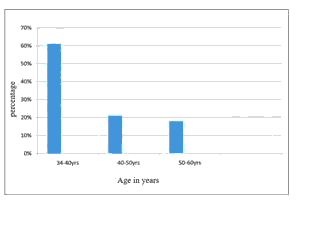
Figure 1: Frequency and percentage distribution of age
Section-A. Reveals that 21%belongs to 40-50yrs of age 18%belongs to 50-60yrs and 61%of belongs to 34-40yrs of age. Reveals that majority of the women are 38%of them completed degree 53%of them completed basic socio-economic belongs and 59%of them middle class family. 87% of them are Hindus and 8%of them are Muslims and 5% Christians.
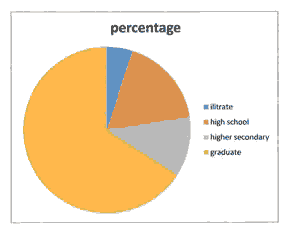
Figure 2: Frequency and percentage distribution of education
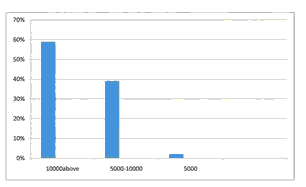
Figure 3: Frequency and percentage distribution of income
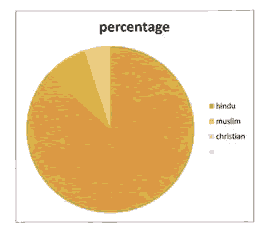
Figure 4: Frequency and percentage distribution of religion
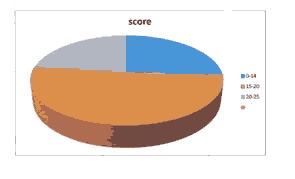
Figure 5: Scores according to the knowledge the women had of breast self-examination.
This figure shows the following results:
• 0-14 of them scored 26%
• 15-20 of them scored 51%
• 20-25 of them scored 23%
• 25-30 of them scored 0%
This clearly shows that 51%of women are having little knowledge of breast self-examination and 26% of women are having poor knowledge.
Discussion
When it comes to women, breast cancer is the commonly detected cancer and also the foremost cause of cancer death. Apart from regular mammogram tests it is necessary to instil the importance of breast selfexamination in women. It is recommended that the selfexamination is done every month especially 7-10 days after the menstrual cycle. The present study was designed to analyse the awareness among women about breast self-examination and breast cancer. This type of study helps public health interventions and reiterates the importance of awareness programs. 26% of women are not having knowledge about breast self-examination and breast cancer. 51% of women are having little knowledge. 24% of women are having adequate knowledge.
Among 100 women, 77% of women have little or no knowledge about breast self-examination. In the present study most of the women were educated but had no awareness of breast self-examination. Contrary to our study, Charles reports that as educational level increased, self-examination is more regularly practiced [4]. However, Didarloo’s studies was in accordance with the present study [5]. So it is necessary to initiate and conduct structured teaching program, health education and demonstrate to create awareness among women on breast self-examination. The results of the present study is a vital concern to the healthcare professionals including the professional nurse, practitioners nurse, administrator, nurse educator and researcher to create awareness. Similar results were observed in other studies [3]. Breast self-examination has been suggested as a key strategy in timely detection and for subsequent successful treatment [6].
References
- Mathur, Prashant, Sathishkumar Krishnan, Chaturvedi Meesha, and Das Priyanka, et al. "Cancer statistics, 2020: report from national cancer registry programme, India." JCO Global Oncology 6 (2020): 1063-1075.
- Foster Jr, Roger S, and Costanza Michael C. "Breast self-examination practices and breast cancer survival." Cancer 53, (1984): 999-1005.
- Huguley Jr, Charles M, and Brown Robert L. "The value of breast self-examination." Cancer 47, (1981): 989-995.
- Didarloo, Alireza, Nabilou Bahram, and Khalkhali Hamid Reza. "Psychosocial predictors of breast self-examination behavior among female students: an application of the health belief model using logistic regression." BMC pub heal 17, (2017): 1-8.
- Dadzi, Rita, and Adam Awolu. "Assessment of knowledge and practice of breast self-examination among reproductive age women in Akatsi South district of Volta region of Ghana." PloS one 14, (2019): e0226925.
- Azemfac, Kareen, Christie S, Carvalho Melissa M, and Nana Theophile, et al. "A community-based assessment of knowledge and practice of breast self-examination and prevalence of breast disease in Southwest Cameroon." J canc epidem 9, (2019):1-3.
Author Info
Mrs. Jeyasree and AR. Bharathi*
Department of Nursing, Bharath Institute of Higher Education and Research, Selaiyur, Chennai, Tamil Nadu, IndiaCitation: Mrs. Jeyasree, AR. Bharathi A Study to Assess the Level of Knowledge on Women Regarding Awareness of Breast Self- Examination, Which Reduce the Risk for Breast Cancer Complication , J Res Med Dent Sci, 2021, 9(11): 1-5
Received: 01-Dec-2021 Accepted: 15-Dec-2021 Published: 22-Dec-2021
